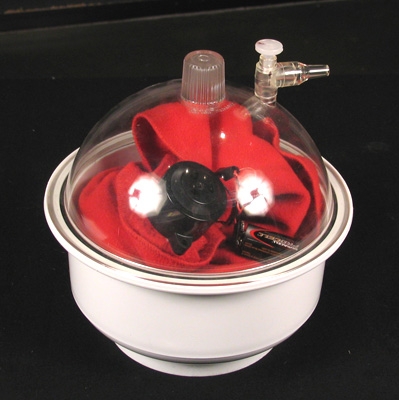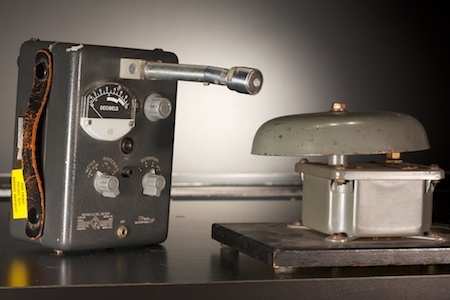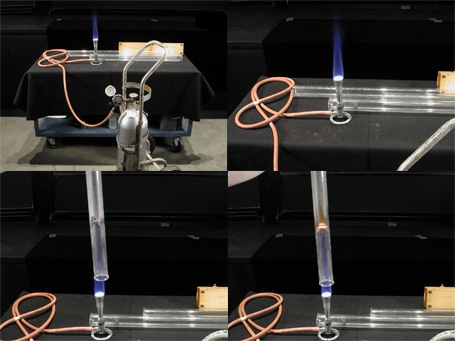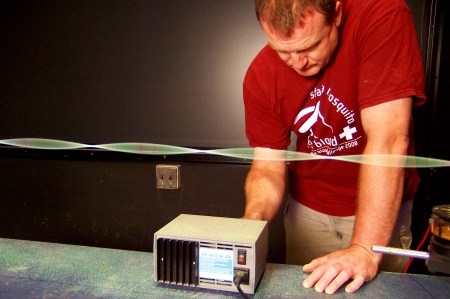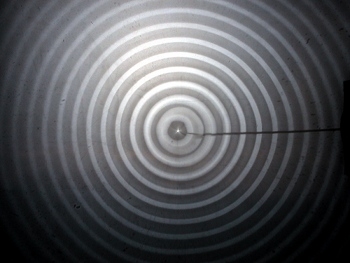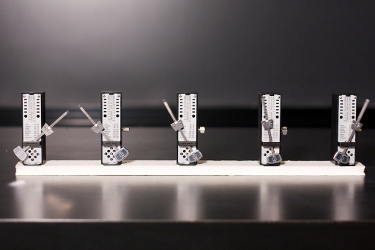Single air track glider, with and without variable frequency driver, variable damping, and oscilloscope position vs. time display.
What It Shows
With one end of the car attached via a spring to the end of the track and the other end of the car coupled (via a similar spring) to a driving motor, we can see how the car behaves when it is driven below, at, and above the resonance frequency. Markings on the motor help to show the phase relationships between the driver and car at different frequencies. A storage scope tracks the motion of the car (see Setting It Up...
Read more about Driven Damped Oscillator